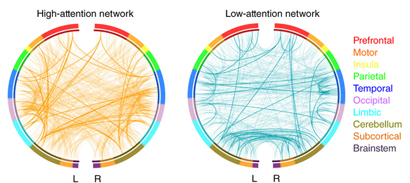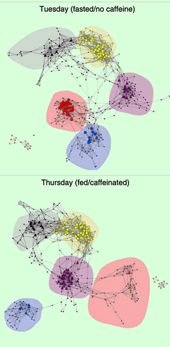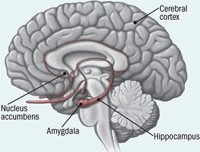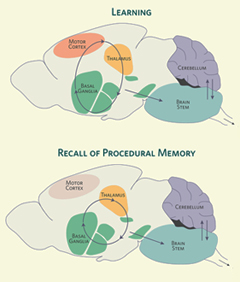Monday, 12 December 2016
Some Amazing Predictions Based on Brain Connectivity

This week, I’d like to tell you about two very interesting articles. The first, by Emily S. Finn and her colleagues, was published in the journal Nature Neuroscience in October 2015 and is entitled “Functional connectome fingerprinting: identifying individuals using patterns of brain connectivity.” As its title suggests, Finn’s research team successfully identified individuals from patterns not on their fingertips, but rather in their brains! (more…)
From the Simple to the Complex | No comments
Monday, 7 November 2016
Norman Doidge and cerebral plasticity

This week, I want to recommend a Brain Science Podcast featuring Dr. Norman Doidge, first posted online in February 2015. This podcast was in a sense a sequel to one devoted to Doidge’s book The Brain That Changes Itself (links to both podcasts are provided below). Both of these programs discuss a fundamental characteristic of the human brain: its great plasticity, even in adults—in other words, the fact that the brain’s neural circuits reorganize themselves constantly throughout our lifetimes. (more…)
Memory and the Brain | No comments
Thursday, 20 October 2016
Psychologist Scans Own Brain Twice per Week for a Year and a Half
 If you use social media, you have probably seen posts where someone has shown photos of themselves taken at regular intervals over a long period. Well, Stanford University psychologist Russell Poldrack has gone them one better: he has scanned his own brain twice per week for a year and a half! But Poldrack’s goal isn’t simply to wow his friends on Facebook. He is using the scans to do something that has never been attempted before: to understand how the connectivity of a normal person’s brain may vary over a period of several months, a span of time in which people with mental disorders often show considerable fluctuations in their psychological functions.
If you use social media, you have probably seen posts where someone has shown photos of themselves taken at regular intervals over a long period. Well, Stanford University psychologist Russell Poldrack has gone them one better: he has scanned his own brain twice per week for a year and a half! But Poldrack’s goal isn’t simply to wow his friends on Facebook. He is using the scans to do something that has never been attempted before: to understand how the connectivity of a normal person’s brain may vary over a period of several months, a span of time in which people with mental disorders often show considerable fluctuations in their psychological functions.
Poldrack calls his study “MyConnnectome”, and he published his initial results in the December 9, 2015 edition of the journal Nature Communications. It might seem surprising that no one had ever gathered such data before. But not many normal subjects would have been willing to do what Poldrack did: get into an MRI machine for a brain scan two mornings each week (one of them on an empty stomach) for a year and a half, have blood samples taken once per week, and write a report on his diet and physical activity every day. It took a scientist who was really motivated to advance the state of knowledge. (more…)
From the Simple to the Complex | No comments
Sunday, 25 September 2016
How Different Parts of the Brain Co-operate

Perhaps one of the hardest things to understand about the brain is the way that it is organized into networks. In this post, I will discuss a 2015 study, on the brain structures involved in delayed gratification, that makes this complex subject a bit easier to grasp. (more…)
Pleasure and Pain | No comments
Wednesday, 7 September 2016
Motor cortex is required for learning but not for executing a motor skill

The motor cortex was long thought to be the part of the brain that controlled the body’s voluntary movements. Given the plasticity of the cortex as a whole, it seemed reasonable to believe that decisive changes in the connectivity of the neurons in the motor cortex might well be associated with motor learning. Although this may indeed be the case, a study published by Risa Kawai and colleagues in the journal Neuron in May 2015 forces us to reconsider the primacy of the motor cortex in learned sequences of movements, at least in rats. (more…)
Body Movement and the Brain | No comments







